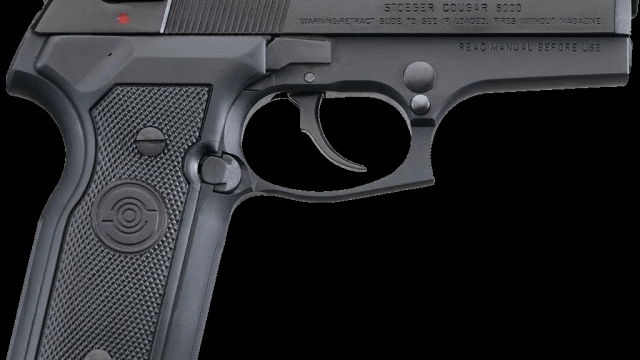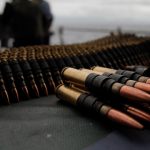
The Bullet’s Tale: Exploring the Power and Impact of Firearms
Firearms have long been an integral part of human history, fundamentally shaping our society and evoking a range of emotions in people. From the piercing sound of a gunshot to the devastating impact it can leave behind, firearms possess a formidable power that is both awe-inspiring and sobering. These complex instruments are not mere objects; they possess the ability to not only take lives but also change history. Behind the scenes, it is the ammunition, the silent accomplice, that breathes life into these metal beasts. In this article, we delve into the world of firearms, where we explore their undeniable power and the profound impact they have had on civilization throughout the ages.
History of Firearms
Firearms have a rich and fascinating history that spans centuries. From their humble beginnings as rudimentary weapons of war to their modern-day role as tools of self-defense and sport, firearms have undeniably left an indelible mark on human civilization.
Origins:
The roots of firearms can be traced back to ancient China, where the invention of gunpowder during the Tang Dynasty in the 9th century laid the foundation for their development. Initially, gunpowder was used in the form of fire arrows and explosive projectiles, but it wasn’t until the 11th century that the first true firearm, the hand cannon, emerged. This handheld weapon could propel projectiles using the ignition of gunpowder, paving the way for further advancements in firearm technology.Evolution:
Throughout the Middle Ages, firearms underwent significant advancements in design and functionality. The introduction of the matchlock mechanism in the 15th century revolutionized the way firearms were fired, enabling more accurate and efficient shooting. This innovation was followed by the wheellock and flintlock mechanisms, further improving firearms’ reliability and usability. As time progressed, firearms transformed from unwieldy and slow-loading muskets into more compact and rapid-firing rifles, pistols, and revolvers.Industrialization and Modernization:
The 19th and 20th centuries witnessed the industrialization and mass production of firearms, marking a significant turning point in their history. The advent of interchangeable parts and assembly line production techniques made firearms more affordable and accessible to the general population. This fueled the proliferation of firearms worldwide, both in military arsenals and civilian hands. The introduction of semi-automatic and fully automatic firearms further revolutionized the battlefield and influenced modern conflicts.
Request A Demo
From ancient battles to modern warfare, firearms have played a pivotal role in shaping the course of history. Understanding their origins and evolution provides valuable insight into the power and impact they have had on society, for better or worse. As we delve deeper into this topic, we can uncover the intricate relationship between humans and firearms and explore the complex dynamics surrounding their use and regulation in today’s world.
Components of Ammunition
In order to understand the complex nature of firearms, it is crucial to delve into the components of ammunition. Ammunition, the driving force behind a bullet’s power and impact, is made up of several essential elements.
First and foremost, the bullet itself is a key component of ammunition. The bullet, commonly known as the projectile, is the actual projectile that is propelled from the firearm. It is typically made of a dense material such as lead, with a pointed or rounded tip depending on its purpose. The shape and weight of the bullet greatly influence its trajectory and intended effect.
Next, we have the casing, or cartridge case, which holds all the other components together. The casing is usually made of brass or similar metals, as it needs to withstand the high pressures generated when the firearm is discharged. This cylindrical container not only houses the bullet, but also the other components of ammunition, including the propellant.
Speaking of propellant, it plays a crucial role in ammunition by providing the energy necessary to propel the bullet forward. Most commonly, a form of gunpowder is used as the propellant. When the gun is fired, the propellant rapidly combusts, generating hot gases that create the force required to expel the bullet from the firearm’s barrel.
It is important to note that these are only a few of the components that come together to form ammunition. Other elements, such as the primer and wadding, also play vital roles, but will be explored further in the subsequent sections. The combination of these components, meticulously designed and integrated, enables firearms to exert their power and impact upon the world.
Impact of Firearms in Society
Firearms, with their swift and deadly power, have significantly impacted modern societies. From their humble beginnings as rudimentary weapons, firearms have evolved into technological marvels that have shaped our history in numerous ways. The impact of firearms on society can be seen in three key aspects: security, crime, and sport.
The presence of firearms has undeniably influenced the security landscape of nations around the world. They have provided individuals and communities with a means to protect themselves against potential threats. Whether it be in the form of personal defense or national security, firearms have played a pivotal role in ensuring the safety of individuals and the integrity of nations. However, the issue of firearm access and its impact on public safety remains a topic of intense debate.
Crime, unfortunately, is another area where firearms have had a profound impact. The use of firearms in criminal activities can result in tragic consequences, causing harm to both individuals and communities. These weapons have a unique ability to inflict life-altering damage quickly and efficiently, making them a favored tool for those engaged in illicit activities. The challenge of addressing firearm-related crime lies in striking a balance between protecting the public and preserving civil liberties.
Beyond security and crime, firearms also find themselves rooted in the realm of sports and recreational activities. Shooting sports, such as target shooting and clay pigeon shooting, provide enthusiasts with a unique opportunity to showcase their accuracy, concentration, and discipline. These competitive events, while governed by strict safety protocols, allow individuals to engage with firearms in a controlled and controlled environment.
In conclusion, the impact of firearms on society is undeniable. They have influenced the security landscape by providing means for defense, created challenges in addressing firearm-related crime, and offered avenues for sporting and recreational activities. As we navigate through the complexities surrounding firearms, it is essential to weigh the benefits they can bring against the potential risks, and work towards finding a balance that ensures both safety and individual freedoms.


